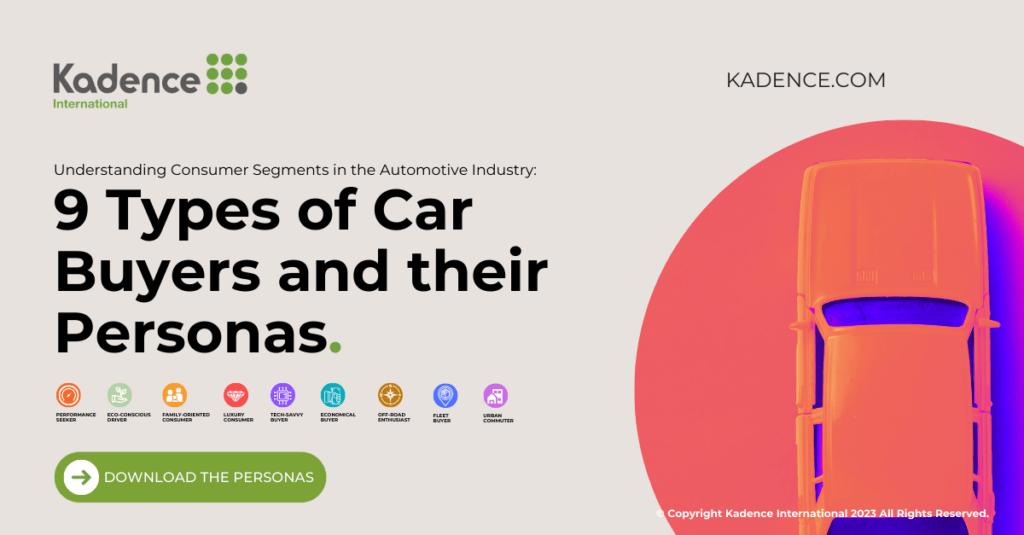As we navigate the fast-paced highway of the automotive industry, it’s critical to understand the changing landscape and shifting consumer trends driving this multi-billion dollar market.
In 2022, the global automotive industry demonstrated its resilience by bouncing back from the shock of the COVID-19 pandemic. According to Statista, worldwide vehicle sales reached an estimated 85 million units, a 6 percent increase from the previous year. This impressive figure underscores not only the industry’s sheer scale but also its economic significance on a global scale.
Yet, a closer look at the industry reveals a more nuanced picture. The advent of electric vehicles (EVs) has sparked a quiet revolution in the global automobile market. The International Energy Agency (IEA) records a steep acceleration in this trend, reporting that global EV sales reached a record 10 million units in 2022. Sales are expected to grow by another 35% this year to reach 14 million. This growing adoption of EVs shines a light on the increasing consumer demand for sustainable and efficient transportation solutions – a trend marketers cannot ignore.
Moreover, a subtle shift in consumer preferences has driven the automotive market towards certain vehicle segments. Market research indicates that SUVs, with their promise of space and versatility, have taken the pole position, accounting for over 46% of total global vehicle sales in 2022. This points to a changing narrative in consumer needs and desires, setting the stage for a new marketing playbook in the industry.
As marketers strive to understand the intricacies of this vast and varied industry, there’s a pressing need to grasp the importance of market segmentation. This article will delve into the nine distinct types of car buyers, each with unique motivations and preferences. Recognizing these distinct customer segments is crucial for effective targeted marketing and provides valuable insights into future trends and growth opportunities in the global automotive industry.
Segment 1: Performance Seekers
Overview:
Performance seekers constitute a notable consumer segment within the automotive industry, characterized by their unwavering passion for speed, power, and an exhilarating driving experience. This segment comprises individuals who prioritize the dynamic performance capabilities of a vehicle over other factors, such as fuel efficiency or practicality.
Values and Priorities:
For performance seekers, the thrill of driving takes precedence, and they value vehicles that offer exceptional acceleration, responsive handling, and superior power output. They seek a symbiotic relationship with their cars, desiring an emotional connection that stems from the exhilaration of speed and the precise control afforded by performance-oriented features.
Vehicle Preferences:
Performance seekers are typically attracted to sports cars, high-performance sedans, and performance-enhanced variants of popular models. These vehicles often boast powerful engines, aerodynamic designs, and advanced suspension systems to maximize speed and handling capabilities. Examples of iconic performance vehicles include the Porsche 911, Chevrolet Corvette, and BMW M series.
Current Trends and Impact on the Automotive Industry:
One notable trend within the performance seeker segment is the growing popularity of electric and hybrid sports cars. As environmental concerns and sustainability gain traction, automotive manufacturers are leveraging advanced electric drivetrains and hybrid technologies to cater to this segment without compromising performance. For instance, the Tesla Model S Plaid has garnered attention for its impressive acceleration and electric range, redefining the perception of electric vehicles in the performance-oriented market.
Moreover, advancements in automotive technology, such as advanced driver-assistance systems (ADAS) and adaptive performance settings, have revolutionized the driving experience for performance seekers. These technologies enhance safety and performance, offering features like launch control, adjustable suspension settings, and precision braking systems.
Market Share:
The performance segment represents a significant portion of the automotive industry. According to industry reports, high-performance vehicle sales have experienced steady growth, with an estimated annual increase of 5% over the past five years. This demonstrates the enduring appeal of performance-oriented vehicles and the continued relevance of this segment.
Manufacturers recognize the influence of performance seekers and compete fiercely to capture their attention. They invest in research and development to push the boundaries of performance, constantly innovating to deliver vehicles that exceed customer expectations.
Additionally, automakers establish partnerships with performance-tuning companies or develop their own performance divisions, further emphasizing the significance of this segment in driving innovation and profitability within the automotive industry.
Overall, the performance seeker segment remains a dynamic force in the automotive market, shaping industry trends and challenging manufacturers to deliver cutting-edge performance vehicles that satisfy the cravings of adrenaline-seeking drivers.
Segment 2: Eco-Conscious Drivers
Overview:
Eco-conscious drivers form a significant consumer segment within the automotive industry, characterized by their commitment to sustainability and environmentally friendly practices. These individuals prioritise vehicles with low emissions, improved fuel efficiency, and reduced carbon footprints. With an increasing global focus on environmental concerns, this segment’s influence on the automotive market continues to grow.
Values and Priorities:
Eco-conscious drivers place great importance on minimizing their ecological impact through their choice of transportation. They value sustainability, energy efficiency, and responsible manufacturing practices. These consumers seek vehicles that align with their environmental values, aiming to contribute to a cleaner and greener future.
Vehicle Preferences:
Electric vehicles (EVs) and hybrid vehicles are particularly appealing to eco-conscious drivers. EVs offer zero tailpipe emissions and are powered solely by electricity, while hybrids combine an internal combustion engine with an electric motor for improved fuel efficiency. The market has witnessed a significant increase in the availability and variety of electric and hybrid models, catering to the preferences of this segment. Notable examples include the Tesla Model 3, Nissan Leaf, and Toyota Prius.
Current Trends and Impact on the Automotive Industry:
The eco-conscious driver segment has experienced considerable growth and influence in recent years. This can be attributed to several factors, including advancements in battery technology, increased charging infrastructure, and government incentives promoting the adoption of electric and hybrid vehicles. As a result, the automotive industry has witnessed a shift towards cleaner transportation options, with major manufacturers investing in electric vehicle development and expanding their electrified vehicle lineups.
One notable trend within this segment is the rise of long-range electric vehicles, addressing the issue of range anxiety and providing increased practicality for daily commuting and longer trips. Improvements in battery technology have led to extended driving ranges and faster charging times, making electric vehicles a viable option for eco-conscious drivers.
Furthermore, the commitment to sustainability extends beyond the vehicles themselves. Eco-conscious drivers actively seek manufacturers who prioritize eco-friendly manufacturing practices, such as using recycled materials and renewable energy sources in production facilities and minimizing overall environmental impact throughout the vehicle’s lifecycle.
The impact of eco-conscious drivers on the automotive industry is far-reaching. In response to this growing demand, automakers are investing heavily in electric vehicle research and development, introducing new models, and expanding their charging infrastructure networks. This segment’s influence has also prompted the development of innovative solutions, such as vehicle-to-grid (V2G) technology, which allows electric vehicles to contribute to the power grid, further promoting sustainability.
Furthermore, governmental policies and regulations aimed at reducing emissions have stimulated the automotive industry’s transition toward electric and hybrid vehicles. Increasingly stringent emission standards and financial incentives have encouraged manufacturers to prioritize sustainable alternatives, ultimately shaping the industry’s future.
Market Share:
The eco-conscious driver segment has been steadily expanding. Sales of electric and hybrid vehicles have experienced significant growth in recent years, with a projected annual growth rate of over 20% in the electric vehicle market alone. This demonstrates the increasing appeal and market viability of eco-friendly vehicles.
Manufacturers that actively embrace sustainability and offer a diverse range of electric and hybrid vehicles are well-positioned to capture the attention and loyalty of eco-conscious drivers. By focusing on environmental impact reduction, innovation in battery technology, and charging infrastructure expansion, automotive companies can align their strategies with the preferences and values of this influential segment, contributing to a more sustainable future.
Segment 3: Family-Oriented Consumers
Overview:
Family-oriented consumers form a significant segment within the automotive industry, prioritizing safety, practicality, and spaciousness in their vehicle choices. This segment includes individuals or families seeking vehicles that accommodate their loved ones comfortably while offering advanced safety features. With the primary focus on the well-being of their family members, these consumers prioritize functionality and convenience.
Values and Priorities:
Family-oriented consumers prioritize the safety and security of their loved ones above all else. They seek vehicles that provide ample space for passengers and cargo, ensuring comfort during family outings and daily commutes. Reliability, durability, and ease of use are also essential considerations for this segment.
Vehicle Preferences:
SUVs, minivans, and crossovers are popular choices among family-oriented consumers. These vehicles offer generous seating capacity, versatile cargo space, and convenient features such as rear-seat entertainment systems and power-operated tailgates. Safety features like advanced driver-assistance systems (ADAS), including collision warning, lane-keeping assist, and blind-spot monitoring, are highly valued by this segment.
Current Trends and Impact on the Automotive Industry:
One prominent trend within the family-oriented segment is the increasing integration of advanced safety technologies. Automakers are investing in developing and enhancing safety features to provide a secure driving environment for families. This includes automatic emergency braking, adaptive cruise control, and rearview cameras. Integrating these technologies helps minimize accidents and improve overall safety ratings, which resonates strongly with family-oriented consumers.
Another trend is the rise of hybrid and electric family vehicles. As sustainability becomes increasingly important for families, automakers are introducing electrified options in the family vehicle segment. Hybrid SUVs and minivans offer improved fuel efficiency and reduced emissions, aligning with the eco-conscious values of many families. Electric family vehicles are also gaining popularity as charging infrastructure expands, providing a greener alternative for daily commutes and family trips.
Furthermore, advancements in connectivity and infotainment systems have transformed the in-car experience for family-oriented consumers. Seamless integration with smartphones, voice-activated controls, and rear-seat entertainment options allow families to stay connected and entertained during journeys, enhancing overall comfort and convenience.
The family-oriented segment holds a significant share of the automotive market, as families represent a substantial consumer base. Manufacturers recognize this and continue to develop vehicles specifically tailored to meet the needs of families, incorporating features like versatile seating configurations, ample storage compartments, and enhanced child safety features.
Manufacturers prioritizing safety, functionality, and convenience in their family-oriented vehicles will resonate with this segment. Emphasizing safety ratings, interior space, storage options, and family-friendly features in marketing efforts can effectively target family-oriented consumers. Additionally, providing comprehensive after-sales support, such as extended warranties and reliable service networks, helps build trust and loyalty among families prioritizing long-term vehicle ownership.
Segment 4: Luxury Consumers
Overview:
Luxury consumers represent a discerning segment within the automotive industry, characterized by their affinity for sophistication, exclusivity, and high-end features. These individuals seek vehicles that offer refined craftsmanship, cutting-edge technology, and unparalleled comfort. The luxury segment caters to those who value prestige, status, and a superior driving experience.
Values and Priorities:
Luxury consumers place a premium on elegance, quality, and exceptional performance. They seek vehicles that showcase the pinnacle of automotive engineering and design. Luxury buyers prioritize comfort, prestige, and seamless integration of advanced features that enhance their driving experience.
Vehicle Preferences:
Luxury consumers are drawn to high-end sedans, SUVs, and sports cars that exemplify opulence and superior performance. These vehicles often feature luxurious materials, meticulously crafted interiors, and state-of-the-art technology. Well-known luxury brands such as Mercedes-Benz, BMW, and Audi have established themselves as leaders in this segment.
Current Trends and Impact on the Automotive Industry:
One prominent trend within the luxury segment is the integration of advanced technology. Luxury vehicles now incorporate cutting-edge features such as advanced driver-assistance systems (ADAS), voice-activated controls, augmented reality displays, and autonomous driving capabilities. Technology enhancements aim to provide a seamless and personalized driving experience that caters to luxury consumers’ evolving needs and expectations.
Another significant trend is the introduction of luxury electric vehicles (EVs). Luxury automakers have embraced electric mobility, combining eco-consciousness with opulence. Electric luxury vehicles offer exceptional performance, instant torque, and zero emissions, addressing the growing demand for sustainable luxury options. Leading luxury brands like Tesla, Jaguar, and Porsche have successfully entered the luxury EV market.
Personalisation and customisation options have become increasingly important in the luxury segment. Luxury consumers seek the ability to tailor their vehicles to their unique preferences, from selecting premium materials and finishes to customizing technology and comfort features. The availability of bespoke programs allows buyers to create a truly personalized and exclusive driving experience.
Luxury consumers heavily influence the automotive industry. Their demand for opulence and cutting-edge technology drives manufacturers to push the boundaries of innovation, resulting in advancements that eventually trickle down to other vehicle segments. Luxury vehicles often serve as showcases for new features and technologies, influencing the direction of the industry.
Market Share:
The luxury segment represents a significant portion of the automotive industry, generating substantial revenue for manufacturers. Despite its relatively smaller customer base, luxury vehicles command higher price points and profit margins, contributing to the overall profitability of automakers.
To capture the attention and loyalty of luxury consumers, manufacturers must emphasize their vehicles’ craftsmanship, exclusivity, and advanced technology. Highlighting features such as premium materials, bespoke options, high-performance capabilities, and personalized customer experiences can resonate with individuals in this segment. Additionally, offering exceptional customer service, maintenance programs, and exclusive ownership benefits can help solidify brand loyalty among luxury consumers.
Segment 5: Tech-Savvy Buyers
Overview:
Tech-savvy buyers represent a prominent and influential segment within the automotive industry. These individuals are early adopters of new technologies and actively seek vehicles that offer advanced connectivity, innovative infotainment systems, and cutting-edge features. They value seamless integration with their digital lifestyles and prioritize vehicles that provide a high-tech driving experience.
Values and Priorities:
Tech-savvy buyers prioritize connectivity, convenience, and the latest advancements in automotive technology. They seek vehicles that seamlessly integrate with their smartphones, offer intuitive user interfaces, and provide advanced driver-assistance systems. These consumers value staying connected, entertained and informed while on the road.
Vehicle Preferences:
Tech-savvy buyers are drawn to vehicles with state-of-the-art technology and advanced infotainment systems. They appreciate features such as touchscreen displays, voice recognition, smartphone integration (e.g., Apple CarPlay, Android Auto), and wireless charging capabilities. Electric vehicles (EVs) and hybrid models combining technology with sustainability resonate with this segment.
Current Trends and Impact on the Automotive Industry:
One significant trend within the tech-savvy buyer segment is the increasing focus on connected car technology. These buyers seek vehicles that offer seamless integration with their digital lives, providing access to real-time information, navigation, and entertainment services. Features like connected infotainment systems, remote vehicle monitoring, and over-the-air software updates are highly valued by this segment.
Another emerging trend is the proliferation of advanced driver-assistance systems (ADAS). Tech-savvy buyers appreciate features like adaptive cruise control, lane-keeping assist, automatic emergency braking, and parking assistance. They actively seek vehicles with high safety ratings and innovative safety technologies that enhance driver convenience and overall road safety.
Moreover, autonomous driving technology is of great interest to tech-savvy buyers. They closely follow the development of self-driving cars and look forward to the day when they can experience fully autonomous vehicles. These buyers are eager to embrace the future of mobility and are early adopters of semi-autonomous features like lane-centring, self-parking, and advanced collision avoidance systems.
The tech-savvy buyer segment exerts a significant influence on the automotive industry. Their demand for advanced technology pushes manufacturers to invest in research and development, leading to the introduction of innovative features and cutting-edge connectivity solutions. Additionally, their adoption of electric and hybrid vehicles contributes to the growth of sustainable mobility and influences the direction of future vehicle development.
Market Share:
The tech-savvy buyer segment is expanding rapidly as the adoption of connected technology becomes increasingly mainstream. Manufacturers recognize the importance of catering to this segment’s preferences, investing in integrating advanced technology and connectivity features across their vehicle lineups.
To capture the attention and loyalty of tech-savvy buyers, manufacturers should emphasize their vehicles’ technological advancements, connectivity capabilities, and intuitive user interfaces. Highlighting features like smart home integration, cloud-based services, and voice-activated controls can resonate with individuals in this segment. Additionally, offering seamless smartphone integration, robust app ecosystems, and regular software updates can further enhance the appeal of vehicles among tech-savvy buyers.
Segment 6: Economical Buyers
Overview:
Economical buyers represent a practical and cost-conscious segment within the automotive industry. When considering their vehicle choices, these individuals prioritize affordability, fuel efficiency, and long-term cost savings. They seek vehicles that offer reliable performance, low maintenance costs, and reasonable pricing without compromising quality or essential features.
Values and Priorities:
Economical buyers place great importance on financial prudence and maximizing the value of their investment. They seek vehicles with good fuel efficiency, low maintenance and repair costs, and affordable pricing. These buyers prioritize practicality, reliability, and long-term cost
savings over luxurious or high-end features.
Vehicle Preferences:
Economical buyers are drawn to compact cars, hatchbacks, and small SUVs with excellent fuel efficiency and affordability. They appreciate vehicles that are easy to manoeuvre, park, and maintain. Reliability, durability, and high resale value are key factors in their decision-making process. Popular brands in this segment include Honda, Toyota, and Hyundai.
Current Trends and Impact on the Automotive Industry:
One significant trend within the economical buyer segment is the rise of hybrid and fuel-efficient vehicles. As concerns about environmental sustainability and rising fuel costs grow, more economical buyers are considering hybrid options. Manufacturers are responding by offering a more comprehensive range of hybrid and fuel-efficient models, providing buyers with environmentally friendly and cost-effective transportation solutions.
Additionally, advancements in technology and materials have made it possible for economical vehicles to incorporate features that were once exclusive to higher-end models. Standard safety features, infotainment systems, and connectivity options are increasingly available in vehicles targeted at economical buyers. This trend allows buyers to enjoy essential features without compromising their budgetary constraints.
The impact of economic buyers on the automotive industry is substantial. As this segment represents a significant portion of the consumer market, manufacturers strive to meet their needs by producing vehicles that offer practicality, fuel efficiency, and affordability. The competition in this segment drives automakers to continuously improve their offerings, making economical cars more appealing and feature-rich.
Market Share:
The economical buyer segment holds a significant position in the automotive industry. Affordability and value for money remain crucial factors for many vehicle buyers. By catering to the needs and preferences of economical buyers, manufacturers can capture a substantial market share and ensure continued profitability.
To capture the attention and loyalty of economical buyers, manufacturers should emphasize their vehicles’ affordability, fuel efficiency, and practicality. Promoting features such as low ownership costs, excellent fuel economy, and reliable performance can resonate with individuals in this segment. Additionally, providing attractive financing options, extended warranties, and a reputation for high-quality and durable vehicles can further enhance the appeal of a brand among economical buyers.
Segment 7: Off-Road Enthusiasts
Overview:
Off-road enthusiasts represent a passionate and adventurous segment within the automotive industry. These individuals seek vehicles that can handle rugged terrains, provide off-road capabilities, and offer an exhilarating driving experience. They value cars with robust build quality, high ground clearance, and specialized features that allow them to explore challenging landscapes and embark on thrilling off-road adventures.
Values and Priorities:
Off-road enthusiasts prioritize performance, durability, and versatility in their vehicle choices. They seek vehicles that can navigate challenging terrain, offer excellent off-road capabilities, and withstand demanding conditions. These individuals value adventure, exploration, and the freedom to venture off the beaten path.
Vehicle Preferences:
Off-road enthusiasts are drawn to vehicles with 4×4 capabilities, robust suspension systems, and ample ground clearance. They appreciate trucks, SUVs, and rugged off-road vehicles that handle rough terrains and challenging environments. Popular models in this segment include the Jeep Wrangler, Toyota 4Runner, and Ford F-150 Raptor.
Current Trends and Impact on the Automotive Industry:
One significant trend within the off-road enthusiast segment is the increasing demand for off-road-specific features and accessories. Automakers are responding by offering factory-installed off-road packages, including features like reinforced underbody protection, skid plates, off-road tires, and enhanced suspension systems. The availability of these specialized features enhances the off-road capabilities of vehicles, catering to the specific needs of off-road enthusiasts.
Another trend is the integration of advanced technology in off-road vehicles. While off-road enthusiasts appreciate the ruggedness and mechanical prowess of their cars, they also value modern technology for navigation, connectivity, and safety. Features such as GPS navigation systems, smartphone integration, and advanced off-road traction control systems enhance the off-road driving experience, providing convenience, safety, and peace of mind.
The impact of off-road enthusiasts on the automotive industry is significant. This segment represents a dedicated group of buyers willing to invest in vehicles and aftermarket accessories that fulfil their off-road ambitions. Their passion for adventure and exploration drives automakers to continually improve off-road capabilities and introduce innovative features tailored to their needs.
Market Share:
The off-road enthusiast segment holds a niche position within the automotive industry. While smaller than mainstream segments, the demand for off-road vehicles and accessories remains strong. Manufacturers that cater to this segment can build brand loyalty and establish a dedicated customer base, creating a unique identity within the market.
To capture the attention and loyalty of off-road enthusiasts, manufacturers should emphasize their vehicles’ off-road capabilities, durability, and specialized features. Highlighting features such as reinforced underbody protection, advanced traction control systems, off-road-specific tires, and customisable options can resonate with individuals in this segment. Additionally, offering dedicated off-road accessories, organizing off-road events, and fostering a community of off-road enthusiasts can further enhance the appeal of a brand among this passionate group.
Segment 8: Fleet Buyers
Overview:
Fleet buyers represent a significant segment within the automotive industry, comprising businesses and organisations that require a fleet of vehicles to support their operations. These buyers prioritize reliability, cost-efficiency, and functionality when selecting vehicles for their fleets. They seek cars that can withstand heavy use, provide optimal fuel efficiency, and offer features that enhance productivity and safety.
Values and Priorities:
Fleet buyers prioritize the practical aspects of vehicle ownership, focusing on factors contributing to operational efficiency and cost-effectiveness. They value reliable performance, low maintenance requirements, and long-term durability. Fleet buyers seek vehicles that provide value for money and fulfil their specific operational needs.
Vehicle Preferences:
Fleet buyers often select vehicles based on their specific industry requirements. This can include sedans, vans, trucks, or speciality vehicles tailored to their business needs. Factors such as cargo capacity, fuel efficiency, and reliability are crucial in their vehicle preferences. Popular choices for fleet buyers include models from brands like Ford, Chevrolet, and Toyota.
Current Trends and Impact on the Automotive Industry:
One significant trend within the fleet buyer segment is the increasing adoption of telematics and fleet management solutions. Fleet buyers are utilizing technology to monitor vehicle performance, track location and utilisation, optimize routing and scheduling, and improve driver safety. Telematics systems provide valuable insights to fleet managers, enabling them to enhance efficiency, reduce costs, and ensure compliance with regulations.
Another trend is the growing demand for alternative fuel options within fleet vehicles. As organisations aim to reduce their carbon footprint and comply with environmental regulations, fleet buyers are seeking vehicles powered by electric, hybrid, or alternative fuel sources. Manufacturers are responding by offering a more comprehensive range of efficient and eco-friendly options to meet the evolving demands of fleet buyers.
Additionally, fleet buyers are increasingly emphasizing safety features and driver assistance systems. Advanced safety technologies such as collision warning, automatic emergency braking, and lane-keeping assist are highly valued by fleet buyers, as they contribute to reducing accidents, minimizing downtime, and enhancing driver safety.
The impact of fleet buyers on the automotive industry is substantial. As businesses and organisations represent a significant portion of vehicle sales, manufacturers recognize the importance of catering to their specific needs. Customizing vehicles for fleet requirements, offering competitive pricing, and providing reliable after-sales service contribute to building long-term relationships with fleet buyers.
To capture the attention and loyalty of fleet buyers, manufacturers should emphasize their vehicles’ reliability, cost-efficiency, and functionality. Highlighting features such as fuel efficiency, cargo capacity, low maintenance costs, and durability can resonate with fleet buyers. Additionally, providing comprehensive fleet management solutions, telematics integration, and dedicated support for fleet customers can further enhance the appeal of a brand among fleet buyers. Establishing solid relationships with fleet management companies and offering competitive pricing structures can contribute to long-term partnerships within this segment.
Segment 9: Urban Commuters
Overview:
Urban commuters represent a significant and diverse segment within the automotive industry. These individuals navigate busy city streets and face unique challenges such as traffic congestion, limited parking, and the need for fuel efficiency. Urban commuters seek compact, manoeuvrable vehicles that offer features that enhance convenience, connectivity, and urban mobility.
Values and Priorities:
Urban commuters prioritize practicality, fuel efficiency, and convenience when selecting vehicles. They value compact size for easy manoeuvrability in urban environments and seek cars that can navigate tight spaces and crowded streets. Urban commuters prioritize features that enhance their daily commuting experience, such as connectivity, efficient fuel consumption, and agile handling.
Vehicle Preferences:
Urban commuters are drawn to compact cars, hatchbacks, and city-friendly vehicles that offer excellent fuel efficiency and ease of parking. They seek cars with a small footprint, tight turning radius, and good visibility. Popular choices among urban commuters include models such as the Honda Civic, Toyota Corolla, and Volkswagen Golf.
Current Trends and Impact on the Automotive Industry:
One significant trend within the urban commuter segment is the rise of electric and hybrid vehicles. Urban commuters value eco-friendly transportation options that reduce emissions and offer better fuel efficiency. The increased availability of electric and hybrid models and expanding charging infrastructure in urban areas have made these vehicles more appealing and practical for urban commuting.
Another trend is the integration of smart connectivity features in urban commuter vehicles. Urban commuters value seamless integration with their digital lives and seek vehicles equipped with advanced infotainment systems, smartphone integration (e.g., Apple CarPlay, Android Auto), and voice-activated controls. Features that enhance navigation, real-time traffic information, and connectivity to essential apps are highly valued.
Additionally, urban commuters are embracing shared mobility services and alternative transportation solutions. Ride-hailing, car-sharing, and bike-sharing services have gained popularity among urban dwellers seeking convenience and flexibility. Manufacturers are responding by exploring partnerships and providing vehicles specifically designed for shared mobility services.
The impact of urban commuters on the automotive industry is significant, as they represent a large portion of vehicle users in densely populated urban areas. The demand for vehicles that cater to urban commuting needs drives manufacturers to develop compact, fuel-efficient, and technologically advanced models. Manufacturers are also exploring innovative mobility solutions and partnerships to address the evolving preferences of urban commuters.
To capture the attention and loyalty of urban commuters, manufacturers should emphasize their vehicles’ compact size, fuel efficiency, connectivity, and convenience features. Highlighting features such as efficient engines, agile handling, parking assist technologies, and smart connectivity options can resonate with individuals in this segment. Additionally, promoting the compatibility of vehicles with shared mobility services, providing attractive financing options, and offering urban-focused customer support can further enhance the appeal of cars among urban commuters.
Final Thoughts:
In the rapidly evolving automotive industry, understanding consumer segments is not just a luxury but a necessity for manufacturers and marketers aiming to thrive in the market. The nine consumer segments we have explored in this article offer a glimpse into the diverse landscape of automotive consumers, each with unique preferences and priorities.
By delving into the intricacies of these segments, industry stakeholders can gain valuable insights that shape the future of their businesses.
We can anticipate several future trends and predictions within these consumer segments. One evident trend is the increasing demand for electric and hybrid vehicles, driven by the growing emphasis on sustainability and reduced emissions. As technology advances and infrastructure improves, electric cars are poised to become more accessible and widespread among various consumer segments.
Connectivity will also continue to play a significant role, with consumers seeking vehicles that seamlessly integrate with their digital lifestyles. As the Internet of Things (IoT) expands, vehicles will become more connected, offering advanced infotainment systems, integrated apps, and enhanced safety features.
Additionally, autonomous driving technology is steadily advancing, with self-driving capabilities set to revolutionize the automotive landscape, particularly for segments like urban commuters and fleet buyers.
The importance of customer segmentation extends beyond the automotive industry; it is a fundamental aspect of marketing across all sectors. By dividing a diverse consumer base into meaningful segments, marketers can tailor their strategies to better meet each group’s specific needs and desires. This personalized approach leads to more effective marketing campaigns, higher customer satisfaction, and improved brand loyalty.
Working with a market research agency can be invaluable to truly understand consumer segments. Agencies like Kadence International specialize in gathering and analysing data, conducting consumer surveys, and providing insights that go beyond surface-level demographics. By leveraging our market research expertise, marketers can better understand their target audiences, uncover hidden motivations, and identify emerging trends. This knowledge empowers marketers to make informed decisions, develop effective strategies, and stay ahead of the competition.
Consumer segmentation is vital for success in the automotive industry and beyond. As the industry continues to evolve, understanding the diverse needs and preferences of consumer segments will be critical for manufacturers and marketers. By embracing the future trends and predictions discussed in this article and harnessing the power of market research agencies, industry stakeholders can confidently navigate the ever-changing landscape, delivering products and experiences that truly resonate with their target audiences. Ultimately, it is through a deep understanding of consumer segments that the automotive industry can innovate, grow, and shape the future of mobility.
Get regular insights
Keep up to date with the latest insights from our research as well as all our company news in our free monthly newsletter.














 Senior Marketing Executive
Senior Marketing Executive Sales & Marketing
Sales & Marketing General Manager PR -Internal Communications & Government Affairs
General Manager PR -Internal Communications & Government Affairs Vital Strategies
Vital Strategies
 Customer Intelligence Director
Customer Intelligence Director